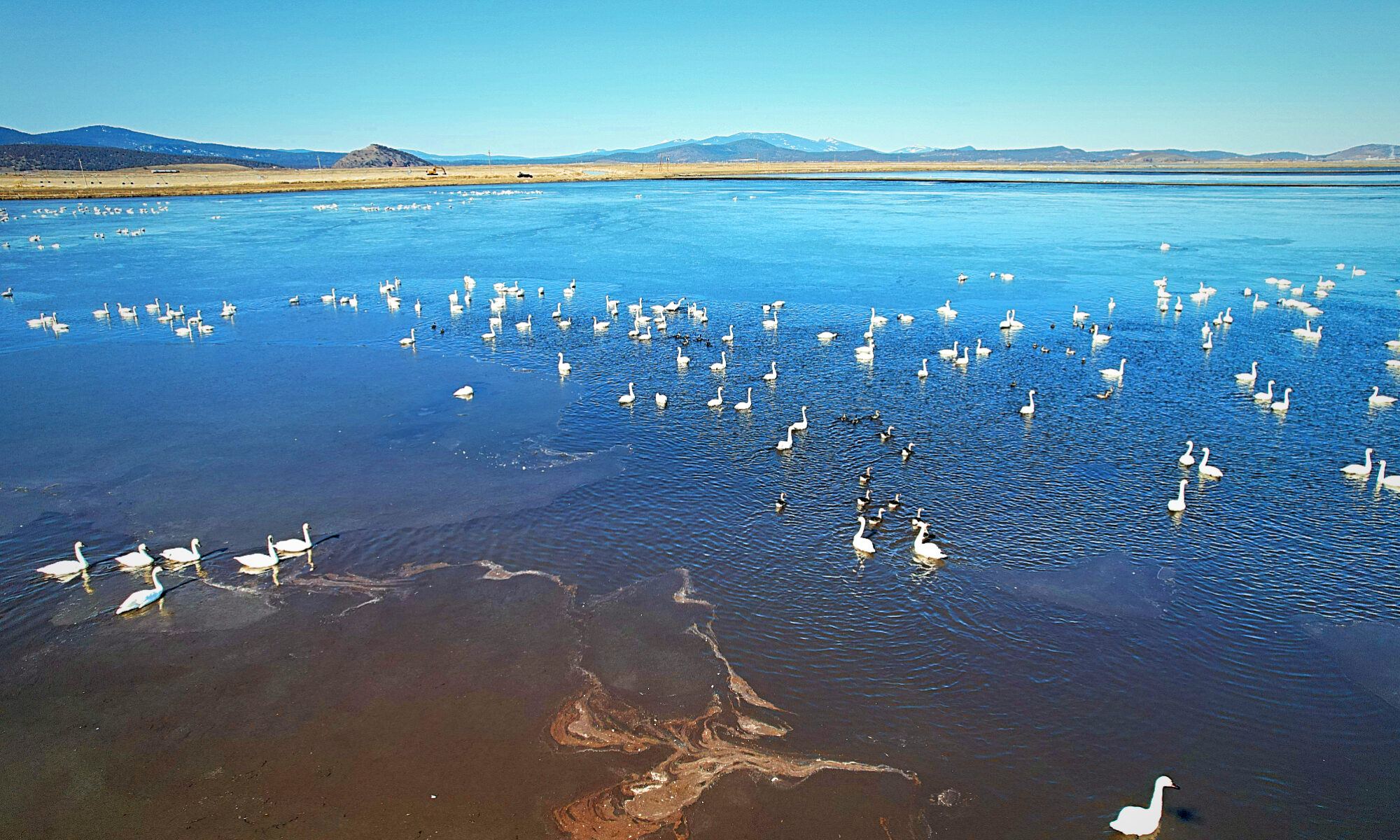Klamath Drainage District landowners have practiced fall and winter flooding since the inception of the district. Despite the number of years it’s been used to the benefit of not only KDD family farmers and ranchers, there are benefits to the Klamath Basin as a whole.
An important fact that should be discussed more is that KDD returns or reuses more than 75% of the water that is used in the district. Other than ensuring the landowners of KDD can produce a crop, that fall and winter irrigation water is also used to benefit:
-
- Klamath Basin refuges
- Augment flows in the Klamath River
- Get reused in KDD
- Offer support for other districts in the Klamath Irrigation Project
- Lessen demand on Upper Klamath Lake at a critical time for C’waam and koptu spawning
- Rehydrate the aquifer that produces cold, clean spring water to the Klamath River

KDD, Klamath Basin Wildlife & The Refuges
With the refuges of the Klamath Basin getting last in line priority, KDD fields are essentially “the only restaurant in town” for the birds of the Pacific Flyway. Fall harvest has provided much needed food and habitat for songbirds, ducks, geese and cranes. Flooding the fields brings out mice and other prey for for bald eagles and other area raptors to feast on while also decreasing the need for pesticide use. In effect, KDD is the default habitat for migrating birds and other wildlife.
Speaking of the refuges, from December of 2021 through August, 2022, KDD sent approximately 3,100 acre feet of much needed water to the Lower Klamath Lake National Wildlife Refuge. While we can hope that much needed precipitation will help salvage our wetlands, right now, KDD has been the only source of water for the refuge. And without winter flooding, the chances of KDD being able to make water available for the refuge becomes incredibly slim simply from the fact there is no water for KDD to reuse for it.
KDD Winter Flooding and Its Impact on Upper Klamath Lake and the Klamath River
The beauty of maximizing KDD’s winter deliveries is that it has no impact on the fishery. KDD’s allocation is only 2% of the forecasted fall and winter inflows to Upper Klamath Lake. In reality, that is less than 1/10 of a foot on Upper Klamath Lake and 5% of the rate in the Klamath River. On top of that, the Klamath Drainage District has already limited its diversions by 60% to help fill Upper Klamath Lake, and the Klamath River is projected to get 58% of fall/winter inflows.
Fall and winter flooding allows KDD to return that water to the system in the spring when it’s desperately needed for salmon spawning. Plus, in March and April when the demand for Klamath Project irrigators is ramping up, KDD has little to no demand at that time when the district receives its full allocation.
How is this possible? The marshlands reclaimed for farmland from Lower Klamath Lake has acted like a “sponge” for millenia, taking in and holding moisture that would be released later in the spring and summer. As the warmer months of the spring roll, the ground is already charged and ready for the growing season ahead. On the other hand, if these fields weren’t flooded during the fall and winter, KDD patrons’ needs from Upper Klamath Lake would add to the stress on Upper Klamath Lake when other districts are making demands on the lake, and there would be no water to send down the Klamath River to help augment spring spawning flows.
But there is a challenge KDD is facing at the moment – the Bureau of Reclamation’s has taken over 900 acre feet in Area K. With the Bureau taking this water, they’ve left no water in our drains for us to utilize for our patrons, which in turn requires us to take more of our winter allocation in order to meet our landowners’ demand.
KDD Patrons Pay the Bureau of Reclamation for Operating Costs
Klamath Drainage District patrons pay 20% of the operation and maintenance (O&M) on the Link River Dam and Upper Klamath Lake. However, in the past these very patrons have not been eligible for any of the Bureau of Reclamation’s drought programs.
Without any drought assistance funding, KDD patrons become more reliant on irrigating in order to survive year to year. In the past, many KDD patrons have volunteered to set aside thousands of acres in order to help send water down the Klamath River. However, despite that offer, the Bureau of Reclamation still wouldn’t allow these patrons to participate in any drought response agency programs.
KDD continues to do the right thing to the best of its ability and within its legal authority to the benefit of the fish, wildlife, ecosystems, and other basin stakeholders and have made some tremendous partners over the years that share this same vision. If you’re interested in learning more, or interested in partnering with the district on any of the multiple sustainable projects the district is pursuing, the district is always looking for great partnerships.












